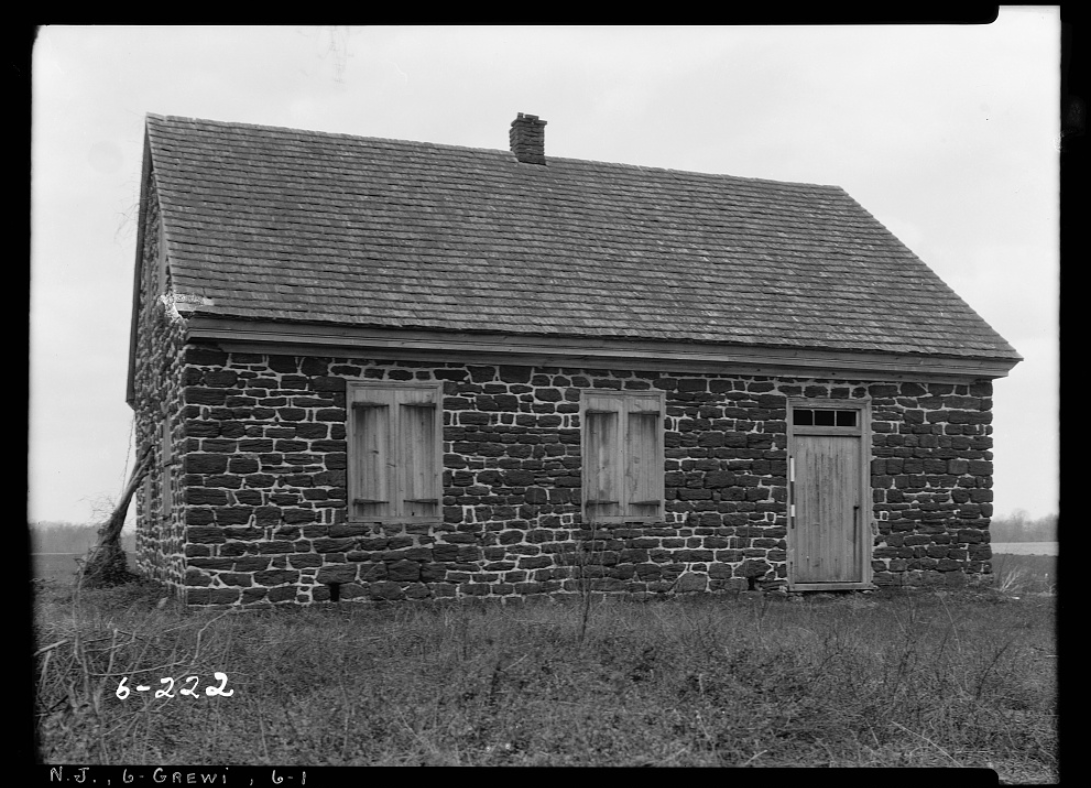Municipality: Greenwich
Category: School House
In 1725 a farmer along Ye Greate Street in Greenwich named Zachariah Barrow died and in his will left his land “for the benefit of a free school for the Township of Greenwich forever.” The land in question ran along the east side of Ye Greate Street. In 1749, the land was surveyed and sold to David Sheppard to be farmed, but the deed included the payment of a yearly rent of thirteen Pounds, for the use of a free school on ground set aside for that purpose.
Very little is known about Zachariah Barrow or why he was so dedicated to education, but thanks to him and the resulting land and rent payments, a school available free to all the children of Greenwich Township was constructed in 1811. The building stands today nearly exactly as it did in 1811. It is a one-room schoolhouse that at one time had long desks and benches from which the students would study the basics of reading, writing and arithmetic.
However, before students ever arrived at the school, larger national matters would intervene in the use of the building. In June of 1812 President James Madison signed into law a Declaration of War with Great Britain, the first time the United States formally declared war on another nation. Ever since the conclusion of the Revolutionary War, Great Britain had been harassing the United States’ interests. The British were actively supporting Native American tribes in the Midwest and their raids into territories of the United States. They were stopping American vessels on the open seas and capturing British-born American citizens to help fight their ongoing war with Napoleon Bonaparte. These and other concerns finally led to the declaration of war in 1812.
Before the little stone building on Ye Greate Street was fully equipped as a school house, it was used by the United States’ militia as a staging ground where soldiers encamped and drilled. However, by 1814, the war was ending with little result for either side, and so the building began to be used for its original purpose as a schoolhouse.
It functioned as a school and town hall until the 1870’s, when fully subsidized public education became the norm in New Jersey. Education was very important to the young nation. By 1870, every state had public schools and America had one of the highest literacy rates in the world. In New Jersey, a Constitutional Commission was set up in 1873 to propose a constitutional right to education in the state. The commission saw education as a way to improve the economy in the emerging industrial society. In 1874, the Legislature of the State of New Jersey proposed an amendment to the State Constitution that provided for the right to a “thorough and efficient” system of education.
In 1909, the Morris Goodwin School was built near the Old Stone Schoolhouse and on land which had originally been willed for that purpose by Zachariah Barrow in 1725. The Stone Schoolhouse has since served as a cabinetmakers shop, a polling station, a meetinghouse for worship, Town Hall, and as the headquarters of the Society of New Jersey Artists. Today, it is owned by the township and maintained by the Historic Greenwich Education Foundation. It is open to the public on special occasions.

